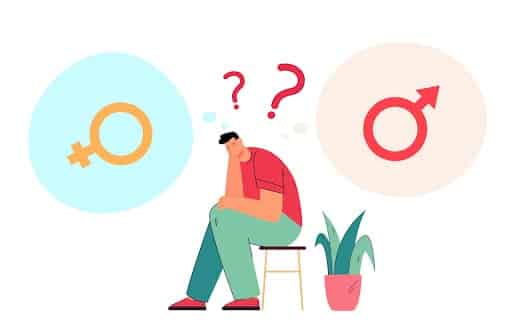For most people, sexuality isn’t always so simple. As a species, we’re always evolving and always changing. Our attraction naturally fluctuates, determining who we are attracted to and in what manner.
Even if you think you’re lesbian, you may have found that guy in the corner of the coffee shop cute. Even if you know you’re a straight man, maybe you’ve found yourself blushing when the boy next door winks at you across the lawn. These little connections can cause confusion for a lot of people – but bringing in the romantic side of sexual direction can be enlightening. You might still be heterosexual or homosexual – but you could be homoromantic or heteroromantic.
Understanding Heterosexuality and Homosexuality
To understand your sexuality, it can be helpful to learn some terms that may resonate with you. Let’s establish some of the basics:
- Homosexual: Someone who feels sexual attraction to people of the same gender as them. Some people prefer their identity as gay or lesbian.
- Heterosexual: If someone feels sexual attraction to people of the opposite gender to them.
- Bisexual: Someone who have sexual attraction for more than one gender.
- Homoromantic: Someone who has only romantic feelings for people of the same gender as them.
- Heteroromantic: someone who is romantically attracted to people of the opposite gender to them.
- Biromantic: someone who is romantically attracted to more than one gender.
With these terms, there is a key distinction between whether you find someone attractive in a romantic sense or sexually. When you experience romantic attraction to someone, you’re likely to move to their personality and have a desire for intimacy without needing sexual contact. If you have sexual feelings to someone, your main focus is probably their physical appearance and your sexual interest in them.
How romantic preference plays a part in your sexuality
Once you’ve understood this distinction between romantic and sexual attraction, sexuality effectively becomes split into two. You may think romantic attraction is more important than sexual attraction, or vice versa, but either way, most people’s sexuality is based on these two components.
So how can you be a ‘straight’ man who daydreams about holding hands with your male lab partner but only wants to be sexual with women?
It could be because you feel attraction towards men romantically and women sexually – in other words, a homoromantic heterosexual. What if you’re a lesbian woman who occasionally hooks up with men, but mainly hooks up with women and cooks up a loving breakfast for them the morning after?
You could be homophobic and bisexual.
What About Internalised Homophobia?
There is an argument that internalized homophobia could influence your romantic and sexual attraction. You might view yourself as a woman with sexual attraction to both men and women, but you can only picture yourself in a long-term, intimate relationship with men. The inability to see yourself romantically involved with women could be due to internalized homophobia rather than being heteroromantic. Even in 2023, heteronormativity is etching into every aspect of society — meaning that the ultimate expectation for a woman to ‘end up’ with a man is acceptable in almost every piece of media we consume.
Movies, books, reality TV shows: a large portion of the global entertainment industry are exclusively heteronormative. Up until the last decade, the plotline of most Disney princess movies was simply men falling in love with women. Popular reality TV shows, such as Love Island or Too Hot to Handle have recently been under fire for only including performative, fleeting fragments of LGBTQ+ content. Because of this heteronormative pipeline, it can be difficult for women to picture another bride at the end of the aisle in their romantic future.
It can be equally difficult for men to see themselves building a life with another man when the expectation is still for men to find a nice wife and build a nuclear family unit of babies. Underrepresented sexualities in the media are likely to struggle with their sexual orientation.
However, it would be inaccurate to suggest that everyone who isn’t romantically attracted to the genders they are sexually attracted to is suffering from internalized homophobia. While it’s important to be aware of the prevalence of heteronormativity in society, such a black-and-white view would undermine genuine sexualities. Sexuality, regardless of external social influences, will always be a diverse and fascinating spectrum.
The Bottom Line
In the end, everyone’s experience of sexuality is different. We frequently question our identities. Labels such as homoromantic, heteroromantic, or biromantic help, but they’re just a beginning. Homophobia in society can affect how you express your sexuality. Remember, your sexual orientation is your identity to define.






